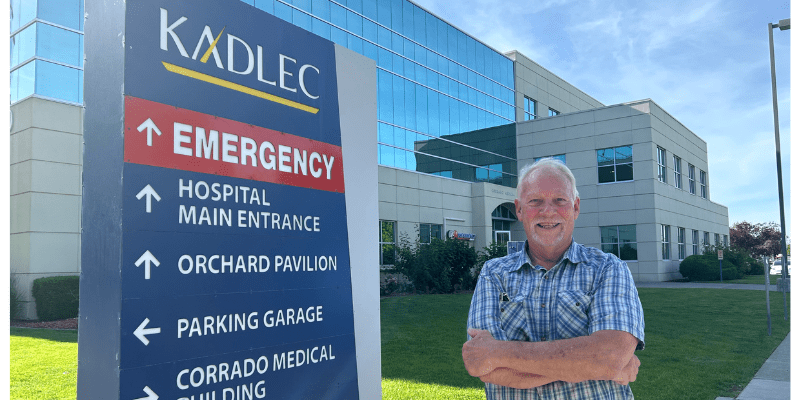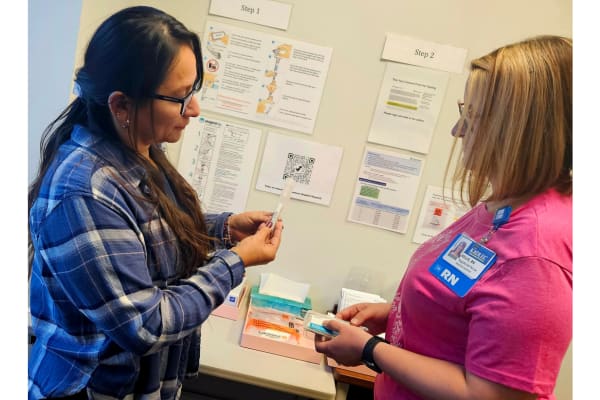Kadlec ER visit reveals tear in heart just in time to save his life

Jim Edens had only seen his wife cry a few times in all their years together. That day at Kadlec Regional Medical Center was one of them.
Dr. Darren Hodgins, cardiothoracic surgeon, was confident but also realistic. Jim had a tear in his heart and needed immediate surgery. He might not survive.
“It is one of the most critical things that can happen to you,” Jim said. “I didn’t go to the Emergency Department thinking surgery. If we had decided to wait one more day, well, I wouldn’t be here.”
Looking back, he said he survived because of the “Jesus Factor” and the cardiac expertise at Kadlec that begins in the Emergency Department doors and continues through surgery and recovery.
It was February of 2024. Jim had never had a heart problem. He recalls eating a bowl of soup and feeling an odd sensation in his chest, like a small explosion, followed by a spreading burning he thought was severe heartburn. People who suffer aortic dissections often describe sudden, severe chest or upper back pain that radiates downward, and often feel stomach pain, weakness in their arms and legs and difficulty breathing. Some also have nausea.
Over the next few days, he felt like he had the flu. He couldn’t sleep and was throwing up. He and his wife, Tamie, decided it was time to go to the Emergency Department as it became harder for him to breathe.
It was a busy day in the Emergency Department, but Jim estimates he waited five minutes or less. His symptoms were classic and quickly recognized. He was rushed to diagnostics and the cardiac team assembled for surgery.
In his younger days, Jim had been a King County Emergency Medical Technician and spent his fair share of days in emergency departments. At Kadlec, he said he could see the expertise that comes with being a Level II Trauma Center. Kadlec was designed a Level II Trauma Center in 2023, one of only two in the state east of the Cascades.
“People think they have all the best care in Seattle. When they move to smaller towns, they often worry about what they are going to do for medical care or if they will have to travel for it,” he said. “I know what it takes for a hospital to become a Level II Trauma Center. That is huge, and I saw the professionalism and the coordination happen right in front of my eyes. It was like a well-oiled machine.”
Jim’s surgery lasted six hours, and after a week in the hospital he was discharged. He remains on medication for his heart and is doing well. Within a few months of surgery, he was bicycling with friends again.


